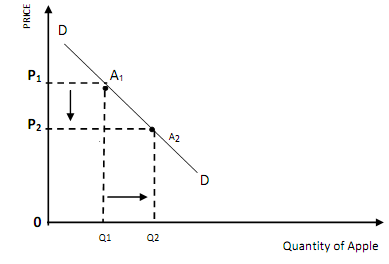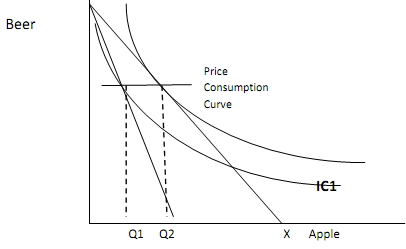Derivation of the Individual's Demand Curve:
Main Assumptions:
(i) The consumer acts rationally so as to maximize utility.
(ii) There are two goods (apple and beer) in his consumption basket.
(iii) The prices of the two goods and consumer's choice besides commodity's own
price (in this case, beside the price of apple) remain constant.
(iv) All other assumptions implicit in the properties of the indifference curve as listed in sub-section (4.3.2).
To derive an individual's demand curve, what we need to show is the effect of a change (fall) in the price of a commodity (apple) on consumption (demand) for apple.

Based on the assumption of consumer rationality, suppose the consumer is originally on optimum consumption point A1 in figure 1 given the original budget RV and original quantity Q1 of apple demanded.

A fall in the price of apple from P1 to P2 (ceteris paribus) pivots the budget line from RV to RX and gives a new optimum consumption point A2, on higher inidifference curve IC2. The point A2 gives a greater quantity Q2 as predicted by the law of demand: A fall in the price of a commodity would cause a greater quantity of it to be demanded, ceteris paribus.
The curve joining consumer equilibrium points such as A1 and A2 is called price- consumption curve (PPC) and it gives individual's demand curve as shown in Figure 2.